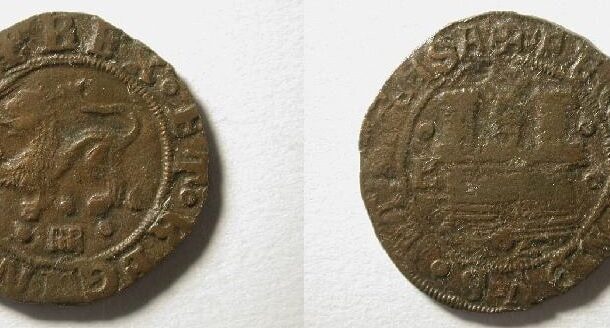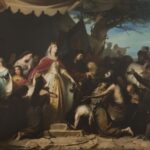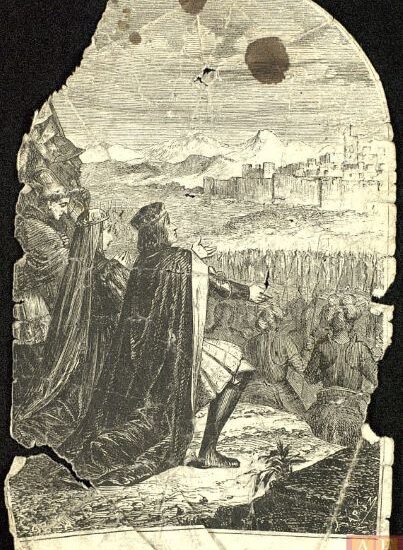
The Catholic Monarchs carried out one of the most famous feats in the history of Spain by capitulating the conquest of the peninsula and expelling the Saracen contingent from the Nasrid kingdom. Undoubtedly, the capture of Malaga in 1487 foretold the future end of Muslim rule, which was consummated after the conquest of Granada in 1492. The city of Malaga was without the Zagal, lord of the region, due to the civil war that was going on in the city of Granada at the time. The siege was one of the longest chapters of the Peninsular War, culminating in the loss of one of the kingdom’s most important ports. The painting shows Isabella and Ferdinand at the door of their tent, on steps covered with a carpet, receiving the expressions of affection and gratitude of the fainting freed captives. This work should be understood as a highly nationalistic history painting, executed in the 19th century at a time when nationalism was on the rise.
Collection: Images
Project: 5. Power and powers in the history of Europe: oligarchies, political participation and democracy.
Chronology: XV
Scope: Secondary Education
Link: http://ceres.mcu.es/pages/Viewer?accion=4&AMuseo=MBASE&Ninv=DO0360P
Resource type: Image
Format: Oil on canvas (480 cm x 300)
Source: Red Digital de Colecciones de Museos de España
Language: Spanish
Date: 1867
Owner: Álvaro Romero González (Modernalia)
Identifier: DO0360P
Copyright: Red Digital de Colecciones de Museos de España
Abstract: The Catholic Monarchs receive the Christian captives after the capture of Malaga, coinciding with one of the final chapters of the peninsular conquest. Painting by Eduardo Cano de la Peña in 1867. Seville Museum of Fine Arts.
Image
Tags








